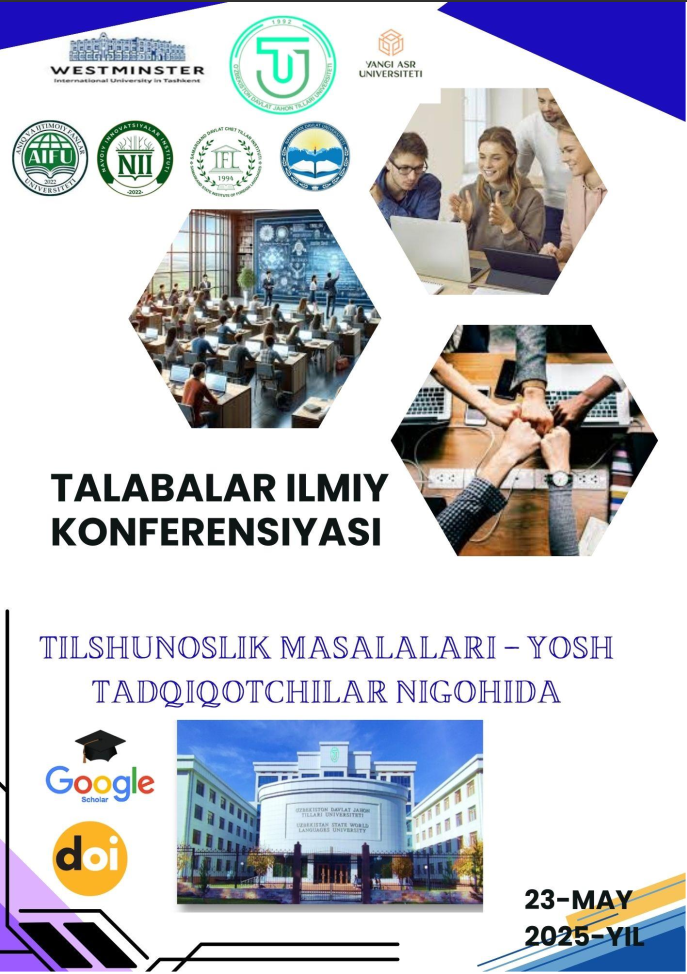DEVELOPING ALTERNATIVE ASSESSMENT METHODS FOR ENGLISH LANGUAGE LEARNERS (IN CASE OF HIGH SCHOOL STUDENTS)
https://doi.org/10.5281/zenodo.15517459
Kalit so‘zlar
English Language Learners, alternative assessment methods, high school education, formative assessment, project-based learning, portfolio assessment, self-assessment, peer review, language acquisition, culturally responsive teaching, educational evaluation, digital assessment tools.Annotasiya
The increasing diversity in high school classrooms has highlighted the limitations of traditional assessment methods when applied to English Language Learners (ELLs). Standardized tests and conventional evaluation tools often do not account for linguistic and cultural differences, leading to an inaccurate measurement of ELL students' true abilities and academic growth. This article focuses on developing and implementing alternative assessment methods specifically designed for high school ELLs. These methods include formative assessments, project-based learning evaluations, portfolios, self-assessments, and peer reviews, all of which provide a more holistic view of student progress. The study examines how these alternative approaches promote language acquisition, critical thinking, and student engagement while reducing test anxiety and cultural bias. Furthermore, the integration of digital tools and culturally responsive practices is explored as a means to enhance assessment effectiveness. The findings suggest that alternative assessments not only improve the accuracy of language proficiency evaluations but also support personalized learning paths, fostering greater academic success among ELL students in high school settings.
Foydalanilgan adabiyotlar ro‘yhati
Brown, H. D. (2004). Language Assessment: Principles and Classroom Practices. New York: Pearson Education. – pp. 56-89.
Council of Europe. (2001). Common European Framework of Reference for Languages: Learning, Teaching, Assessment (CEFR). Cambridge: Cambridge University Press. – pp. 150-175.
Erdanova, Z. (2019). Onomastic is a mirror culture. In Science and practice: a new level of integration in the modern world (pp. 149-152).
Gulomova, R. (2024). Embracing cultural classes: unveiling the significance of culture in EFL education. O ‘zbekiston davlat jahon tillari universiteti konferensiyalari, 665-671.
Karimova, N. (2021). Ingliz tili o‘quvchilarini baholashda innovatsion yondashuvlar. Toshkent: O‘qituvchi nashriyoti. – B. 45-67.
Kholbutayeva, S., & Gulshoda, R. (2025). PEDAGOGICAL INNOVATIONS: HOW TO ENHANCE STUDENT ENGAGEMENT THROUGH KAHOOT?. YANGI O ‘ZBEKISTON, YANGI TADQIQOTLAR JURNALI, 2(7), 141-145.
LOST IN TRANSLATION: HOW SOCIAL MEDIA SLANG SHAPES GLOBAL COMMUNICATION. (2024). Western European Journal of Linguistics and Education, 2(6), 185-189. https://westerneuropeanstudies.com/index.php/2/article/view/1185
McKay, P. (2006). Assessing Young Language Learners. Cambridge: Cambridge University Press. – pp. 101-130.
Methodology of step-by-step teaching of listening comprehension in english through innovative cluster approach in pedagogic education
Muhtashamova, P. Z. (2019). THE USE OF ICT IN THE ENGLISH CLASS. Наука и образование сегодня, (6-1), 87-89.
O‘rozboeva, M. (2022). O‘zbek maktablarida ELLs uchun alternativ baholash tizimi. "Ta'lim va Innovatsiya" jurnali, 4(2), – B. 23-35.
Rasulov, Sh. (2020). Xalqaro tajribada til o‘rganuvchilarni baholash usullari. Samarqand: Ilm Ziyo. – B. 102-118.
To’ychiyev, B., & Mamatkulova, F. (2024). The role of think-aloud strategy in teaching reading comprehension to elementary learners. O ‘zbekiston davlat jahon tillari universiteti konferensiyalari, 161-166.

